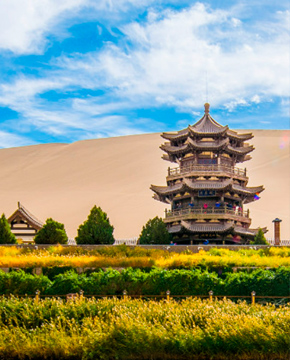As one of the beautiful and significant places along the silk road, Xinjiang is the place where you can not only enjoy the magnificent natural landscape but also experience the ethnic culture.
Xinjiang has been an important passageway of the ancient Silk Road in history, and its strategic position is very important.
Xinjiang Panoramic Tour is good for you to Xinjiang best from desert to lake, from mountain to grassland.
Brief introduction of Xinjiang:
Xinjiang is situated in the hinterland of the Eurasian Continent, with a land border of more than 5,600 kilometres, it has been an important passageway of the ancient Silk Road in history, and its strategic position is very important.
Why is it worth to visit:
In Xinjiang, you can enjoy the magnificent natural views and learn the ethnic culture. Among them, in Northern Xinjiang, travelers can visit the natural beauty and experience the grassland culture. In southern Xinjiang, you can appreciate the mysterious and exotic Uighur culture, that will definitely feast your eyes.
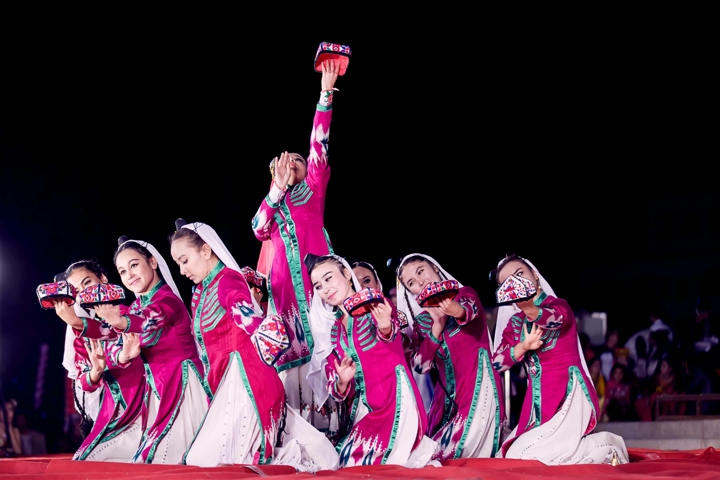
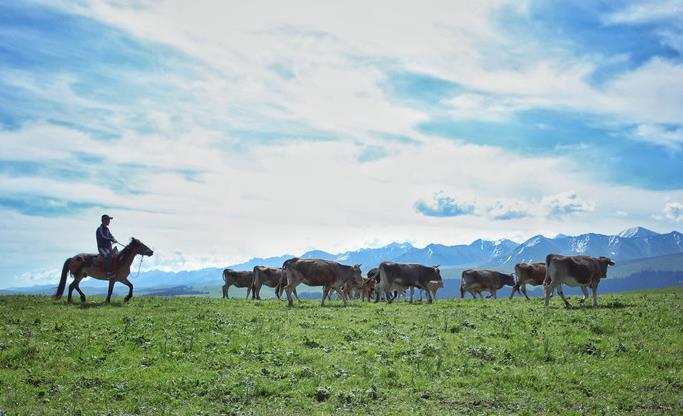
What to visit in Northern Xinjiang?
Burqin:
Starting from Urumqi, we will drive all the way to Burqin. When we arrive here, you will visit Five-Colour Beach, walk into the colourful Beach, you will feel as if in a fantasyland. The unique lava landscape consisted of purplish red, vandyke red, yellow and light green mudstone, sandstone and gravel and that is the masterpiece of nature. Let's continue to visit, you can also enjoy the beautiful sunset at dusk if time permits, you may stroll along Burqin local night market to enjoy the BBQ or grilled fished and kawas (local made Beer).
Kanas Scenic Area:
As one of the most popular scenic areas in Xinjiang, here, you can not only enjoy the magnificent mountains and lakes but also visit the snow-capped icebergs. Kanas Scenic Area is situated in the middle of the Altai Mountains, near the northern tip of Xinjiang. In Mongolian, Kanas means "beautiful, rich and mysterious". It is famous for the beautiful scenery of Kanas Lake and its surrounding snow mountains, grasslands and birch forests. It is known as "Eastern Switzerland, and a paradise for photographer".
There are many Tuva villages in the scenic area, in the Tuva village, you will see many lovely Tuva cottage, which is available for tourists to stay in.
Hemu Village:
Continue to visit, you will see some beautiful and adorable villages in Kanas scenic area. Hemu Village is known as "the first village in China". It is an exquisite and unique wooden house village with a small bridge and flowing water, snow peaks, forests, grasslands, blue sky and white clouds, which is quite magnificent.
All the houses in Hemu Village are simple wooden huts, and it scattered in the valley between the mountains, the local ethnic minority compatriots are working in the courtyard, which is unsophisticated and peaceful, the village is surrounded by grasslands, birch forests and other beautiful scenery.
Karamy:
After enjoying the sunrise of Kanas Scenic Area, we will head to the famous oil city Karamy with about 8 hours driving. Travel along the Gurbantunggut Desert to the Urho Ghost City, also known as “Wuerhe Wind City”, a unique wind-eroded geological area commonly referred to as "Windy City" because of the frequent howling winds, and this is the most beautiful Yadan Landform in the region.
Sayram Lake:
What an exciting day, after breakfast we are going to visit the Sayram Lake, standing on a hillside of the scenic area, the Sayram Lake looks like a bright sapphire hanging in the faulted basin between the western Tianshan Mountains. In winter, the Sayram Lake is wrapped with silver which formed a magnificent view of the snowfield; In spring and summer, the prairie by the lake is full of wildflowers and cattle and sheep were scattered over the grassland, so that, people can not only enjoy the scenery of Sayram Lake but also experience the unique Kazakh culture.
On the way to Sayram Lake, you will see the famous Guozigou Bridge, it is the largest and most important bridge in Xinjiang. There are many beautiful S bends and you can enjoy the scenery of Guozigou valley which is the most beautiful valley in the southern Xinjiang route.
Tekes County:
Tekes County is also the flourishing place of the Wusun culture. Tekes county is situated in the rainy area of the Tianshan Mountains, where there is plenty of water and grass, and the climate is warm and cold, so you can see the variety of horses.
Kalajun grassland is situated in the southeastern side of Tekes County, it is one of the most famous grasslands in Xinjiang. The grassland is backed by snow mountains, here you can see the forests, flowers and other spectacular landscapes.
Nalati Grassland:
Nalati grassland is a typical alpine meadow and subalpine meadow landform with snow mountains, plateau, forests, meadows and rivers. The average elevation of summer pasture is 2200 metres, which ranks first in the grassland of the Ili Valley. Therefore, Nalati grassland is also known as "aerial grassland". The scenic area is always attracted more visitors to visit every year. According to Turks " Nalati " means the first place to see the sun. The water from the surrounding large rivers provides the meadows to be always fresh in the summer.
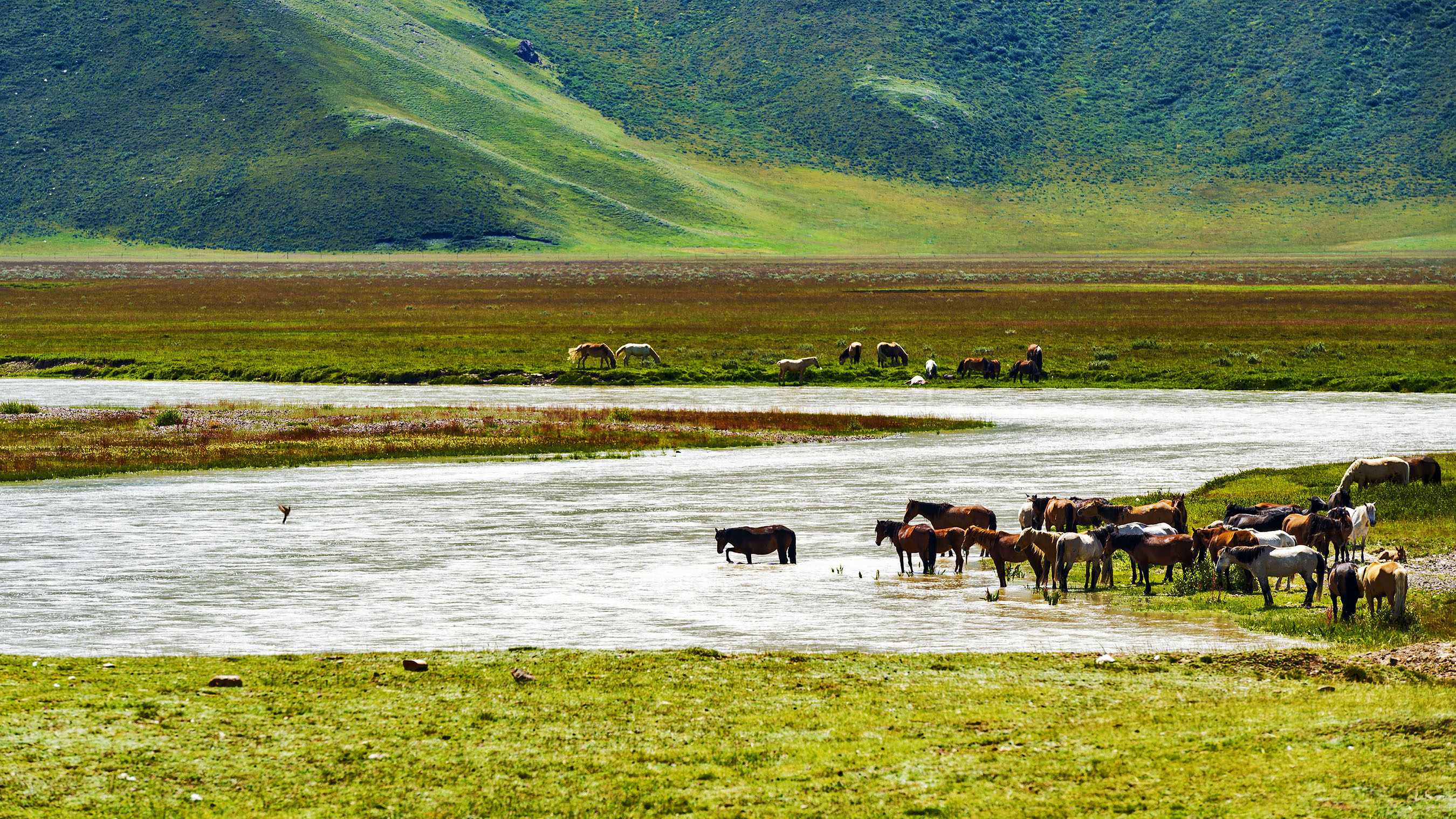
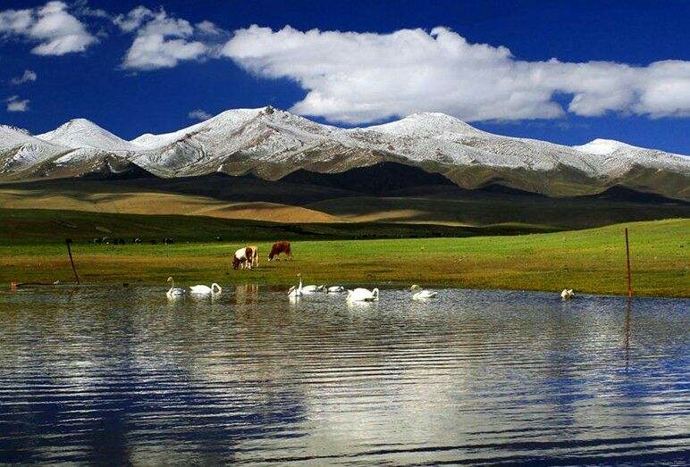
Bayanbulak:
As China's first Swan Nature Reserve, “Bayanbulak Swan Lake” is a paradise for the birds. It is home to tens of thousands of swans of various species, including whooper swan, whistling swan, and mute swan. They build their nests in the food-abundant swamp and lead an easy, happy life in the lakes. At times of leisure, they either plume their white feathers with their bills or sing loudly and excitedly. The most charming scene on the lake is a group of swans dancing a “water ballet” together. The local residents regard the swans as “birds of purity and chastity” and “a symbol of good luck.” Therefore, they have never tried to capture any swans, guaranteeing a safe and peaceful living environment for the birds. In addition to Swans, Bayanbulak also accommodates nearly 130 other birds, such as the black stork, golden eagle, imperial eagle, and snowcock. For those long- distance-traveling and exhausted migrating birds, Bayanbulak will always be a warm, peaceful and safe haven.
What to visit in Southern Xinjiang?
After enjoy the stupendous scenery of Northern Xinjiang, now we are going to visit some mysterious and unique scenery in Southern Xinjiang.
Aksu:
Our first destinations in Southern Xinjiang is Kuqa, today you will take the whole day tour in Kuqa which is famous for the Grottoes and the Qiuci Culture.
Kuqa Grand Canyon is one of the excellent geological parks in the world. It recorded the whole process of crustal movement in Xinjiang during the past 400 million years. When you arrive at Kuqa, you can start your journey from the Kuqa Mosque, the second largest mosque in Xinjiang, The mosque also is a representative of Uighur architectural art of the Qing Dynasty. thereafter, you can also travel to Kuqa Old Town, to explore the local folk customs and lifestyle.
Kizil Thousand Buddha Caves is one of the essential Chinese Buddhist Grottoes along the silk road, it has 4 grottoes and 81 murals for you to enjoy.
Subashi ruins is located on the ridges on both sides of Kucha River and 23 kilometers to the north of Kucha City .“Subashi” means “headwater of a river”. It is composed of two parts divided by the river. With a lot of ruins of stupas, temples, and grottoes from the Wei and Jin Dynasties to the end of the Tang Dynasty, the site is the biggest site of Buddhist temples in Xinjiang.
Kashgar:
Kashi formerly known as Kashgar, it has been the largest city in southern Xinjiang for hundreds of years, which is the western end of the silk road at the northern central and southern points of the ancient silk road.
Today we will do full day Kashgar city excursion, Id Kan Mosque is the largest Mosque in China and the most sacred mosque for the locals to practice their Islamic activities.
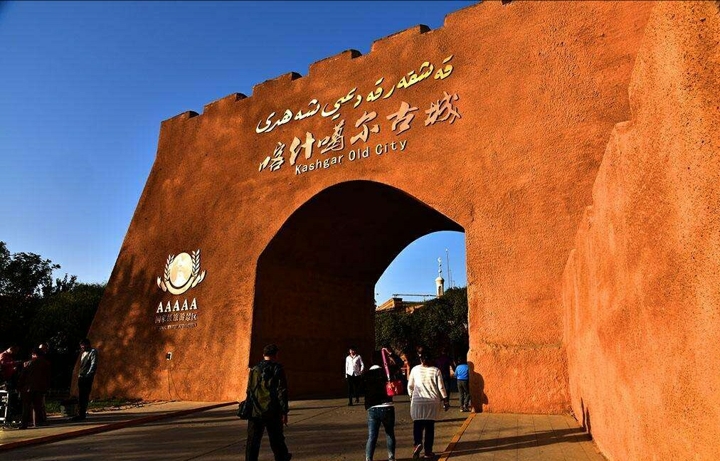
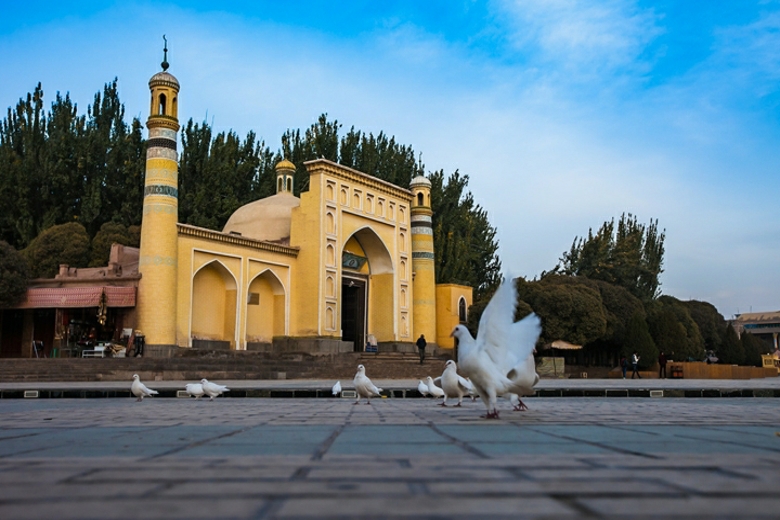
Kashgar Old City:
Kashgar Old Town is one of the largest living constructions in the world. The native architecture itself has historical significance and value, which combines the characteristics of Han and Tang Dynasties, The Roman relics and Uighur's modern life. Kashgar old city s streets and lanes are crisscrossing, flexible layout, a winding path leading to a secluded spot, most houses are civil brick and timber structures, many of the dwellings have a history of hundreds of years, it is China's only Islamic culture as the characteristics of the maze-style city block.
Kashgar Grand Bazaar:
Kashgar Grand Bazaar has a history of more than 2000 years and it is the largest international trade market in Northwest China. In Uighur language 'Bazaar' means a street where there are many small shops and stalls. The traditional bazaar was originally held on Sundays, but it currently is divided into two sections, one is a livestock district that is only open on Sundays and the other is an ordinary district especially busy on Sundays although open every day.
The Abakh Khoja Tomb:
Let's continue our Kashgar city tour, The Abakh Khoja Tomb is situated in the eastern suburb of Kashgar City. this is the famous family tomb of Abakh Khoja, a powerful 17th century Kashgar governor. In fact, this is a mausoleum group of 72 people from five generations of a large family, and the Tomb of Xiangfei is just one of them.
Handicraft Street:
Kashgar city tour ends with the wandering to the bustling Handicraft street, dazzling jewelry, primitive pottery, unique musical instrument, daily resources of the locals. The spare time in the teahouse is our special arrangement for you to relax and experience the local culture and traditions.
Tashkurgan County:
After enjoying the traditional lifestyle in Kashgar city, we will bring to travel to a unique place. Driving on the China and Pakistan highway for about 4 hrs to enjoy the landscape of Pamirs Plateau. we stop in the Opal village to visit the traditional bustling bazaar. The following day will be spent exploring the stunning landscape surrounding the Karakul Lake, where the herds of livestock around the lakeside are reflected in the lake and are extraordinarily graceful, where Kirghiz herdsmen usually settle down and graze their herds. You will have ample opportunity for leisure walking and enjoy the Magnificent natural landscape of Muztagh Peak.
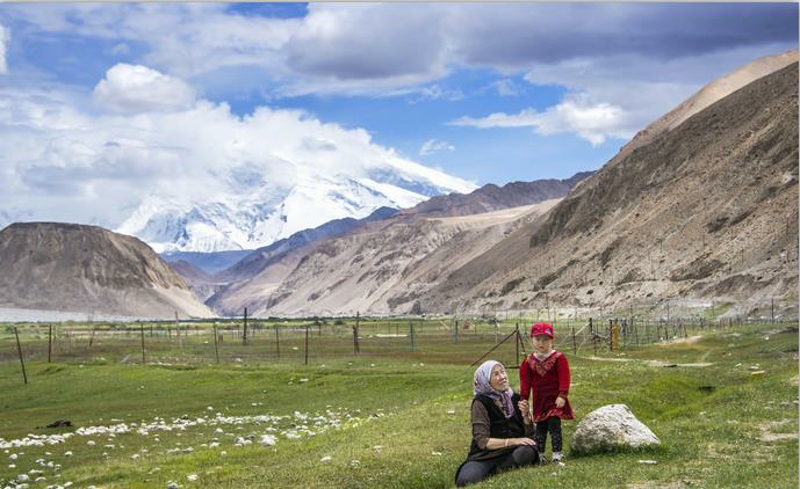
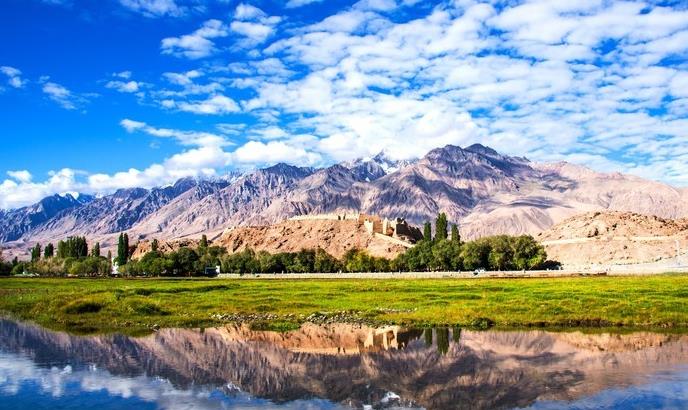
The Stone City:
Located on the north side of Tashkurgan Tajik Autonomous County, The Stone City is a famous ancient city ruin on the ancient road in Xinjiang. The fortress is built on a high mount with very precipitous topography. During the Han Dynasty, here is the capital of Puli, one of the 36 kingdoms in western regions. After unified Western Regions, Tang Dynasty set Shouzhuosuo (as a military station). Here you will see the temple, city wall and official office which built in Tang and Qing Dynasty. afterward, walk around the local pasture to experience the lifestyle of Tajik and enjoy the views of Tashkurgan.
Yarkent:
Yarkent is situated at the western end of the Taklimakan desert. Arrive in Yarkent, transfer to our first stop Yarkent King Tomb, which was buried the King of Yarkent Kingdom and their family from 1533, Exquisite patterns, architecture and history, these attract many people to visit.
Khotan:
Khotan Museum is built at South Tanai Road, Khotan City in 1991, the museum has a floor space for the exhibition of about 200 square meters. Besides wooden tablets, the main exhibition “Khotan Historical Relics Exhibition” displays potteries, wooden wares, textiles, sculptures and building components from ancient sites and tombs in the Khotan area, totaling over 200 specimens. Among them, the Kharosthi and Hotanese tablets, wool fabrics, and various sculptures are of distinctive Khotan features. They mirror the important position and role Khotan occupied and played on the Silk Road.
Next, we are going to visit The Atlas Silk Workshop is open everyday and tours are free and demonstrate the entire process from cocoon to weaving. Which has a showroom where you can buy Atlas silk by the meter or make into scarves, bags, dresses and other items.
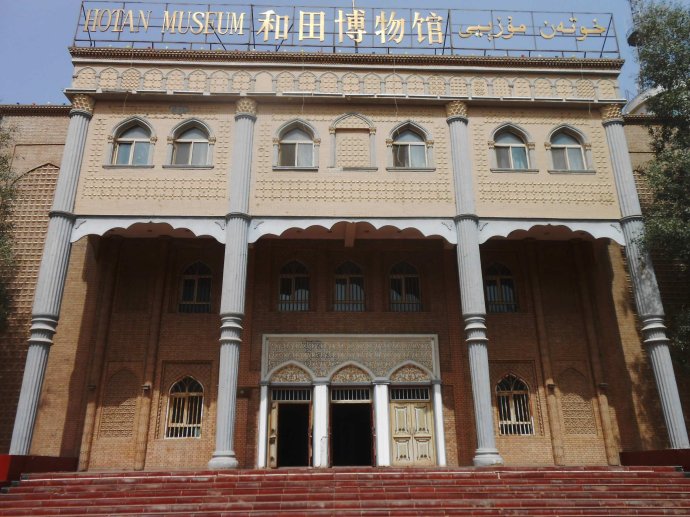
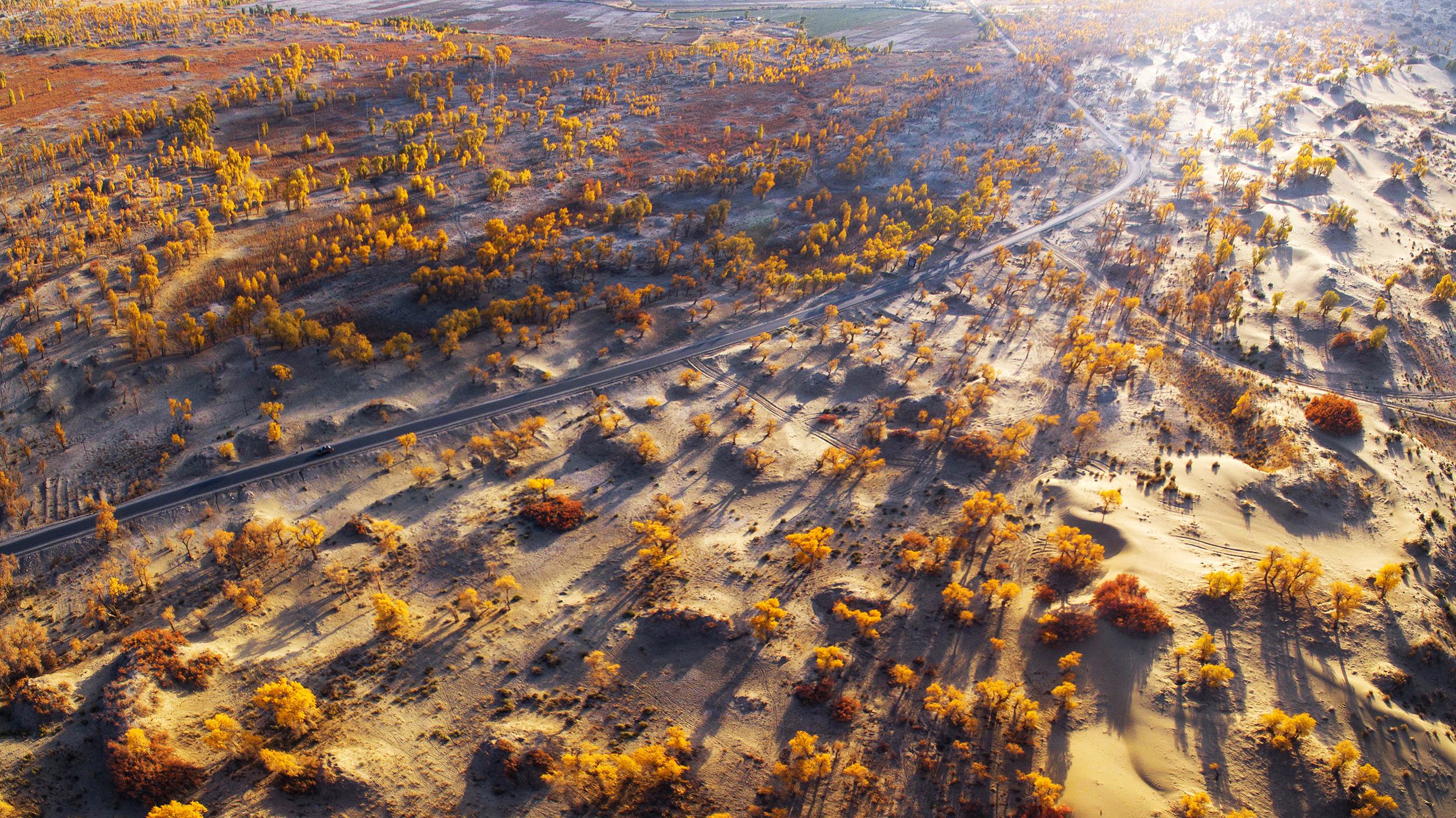
Mingfeng to Khotan:
As one of the attractive and historical places along the silk road, from Kuqa to Minfeng County, traversing the Taklimakan Desert Highway is the most exciting and splendid experience for you.
Taklimakan Desert is the second largest mobile desert in the world, and it is also known as the "Sea of Death", is located in the center of the Tarim Basin in southern Xinjiang, the sand dunes in the hinterland of desert are complex and varied, with duplicate sand hills and ridges like dragons on the ground, and the pyramids of Egypt are overshadowed by the height and scale of the tower dunes. All kinds of honeycomb, feather, scaly sand dunes are unpredictable and magnificent.
Korler Iron Gate:
Iron Gate is an important pass in the ancient Silk Road, according to textual research the gate was set up in Jin Dynasty. Because it is situated at a strategic point and difficult to access, the barrier is vividly called “Iron Gate Barrier”.
Turpan:
Our next tour destination is Turpan when you arrive in Turpan, you will see a charming and cheerful Uighur performance. The folk dance in Turpan is famous for its grace, nature, lightness, and cheerfulness. Under grape trellises in summer, loud and clear sounds of tambourines and Suona horns, graceful dance, and affecting “Meshrep” can clear up the hotness and refresh you after your journey.
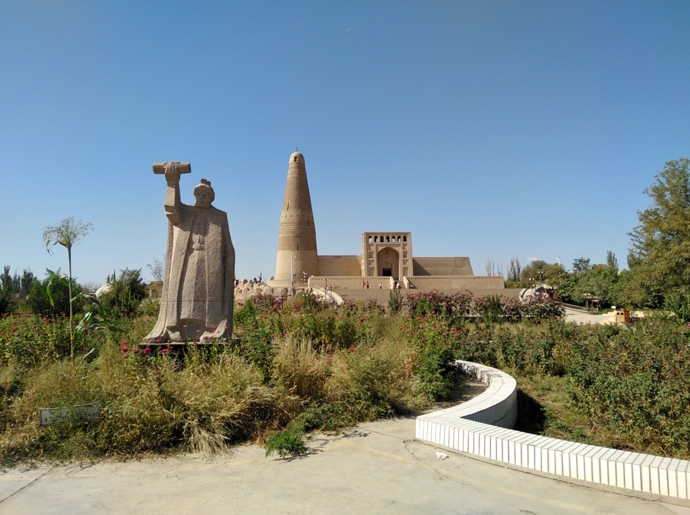
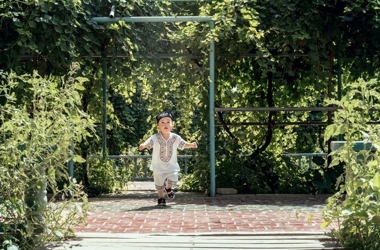
Tuyoq Village:
Tuyoq Village located in the centre of Flaming Mountain Canyon, with a well preserved Uighur orientation, and few tourists. The scenic spot is famous for its seedless grapes and a number of ancient Buddhist meditation caves nearby containing frescoes. Tuyoq has mainly consisted of four parts: Tuyoq Grand Canyon, Thousand Buddha Caves, Mazar, and ancient villages.
Astana Tombs:
After visiting the Tuyoq village, we will head to visit the Astana Tombs, which is the graveyard of the residents who lived in the Gaochang City in the Jin-Tang period. Between 1959 and 1975, a vast number of cultural relics had been unearthed, including Chinese documents, textiles, epitaphs, coins, clay sculptures, pottery, wooden wares, silk-paintings, crops plus some food to name just a few. The site is known as the Underground Museum.
Bezeklik Grottoes:
In the afternoon, we are going to explore the Bezeklik Grottoes, the Thousand Buddha Caves is located on the west bank of Murtuq River Huoyanshan Valley about 40 kilometers east of downtown Turpan. The grottoes were excavated in the late Northern and Southern Dynasties. It has been one of the Buddhist centres in the Western Regions through the Tang, Five Dynasties, Song and Yuan Dynasties. Though they pale in comparison to the cave art of Dunhuang it's still possible to sense the importance of Buddhism to Silk Road travelers, many of whom stopped here to pray for a successful journey. Most of the relics here were carted off by German explorer Albert Von Le Qoc and subsequently destroyed in the Allied bombing of Berlin. Dug into a mountainside beneath sweeping sand dunes and overlooking a roaring stream, the location is beautiful and haunting. the site is quite worth to visit, even if you don't go into the actual caves.
Emin Minaret:
Emin Minaret is located in Muna Village 2 kilometres away in the east suburb of Turpan. The minaret was built by Turpan Prince Emin Khoja, a well-known general of the Qing Dynasty, with 7,000 taels of silver to show his faith to Allah and make the later generations know his life-long achievement. In the second year after the death of Emin Khoja, his second son, Sulaiman completed the construction in 1777, so it has a history of over 200 years.
Karez Well:
Karez Well is a special irrigation system that the locals make full use of the topography of Turpan to draw the underground water to irrigate their farmland ingeniously.
Jiaohe Ruins:
Jiaohe Ruins is located about 10 kilometres west of Turpan, it was founded between 2nd century BC to the 5th century AD. Actually, it was a very prosperous state during the Northern and Southern Dynasties and the Tang Dynasty. Later, due to years of war, the ancient city became ruins. At present, this ancient city is one of the most well-preserved urban relics in China for more than two thousand years, and when you visit the Jiaohe Ruins you can not only enjoy the culture of western regions but also experience the vicissitudes of history, which is quite worth visit.
Xinjiang International Grand Bazaar:
It is said Erdaoqiao Xinjiang International Grand Bazaar is the best place where you can taste the traditional Xinjiang food and buy a variety of ethnic products. Xinjiang International Grand Bazaar is located in the Tianshan District of Urumqi City, it is the largest Bazaar in the world by scale, combining Islamic culture, architecture, ethnic commerce, tourism, and entertainment. It is also one of the most famous landmarks in Xinjiang.
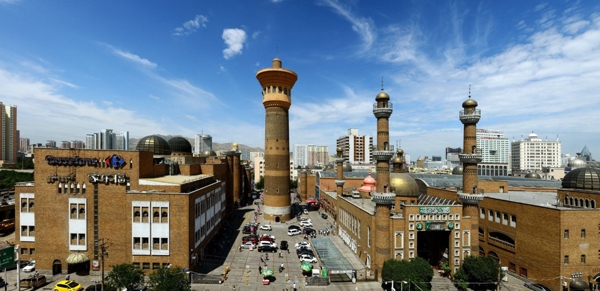
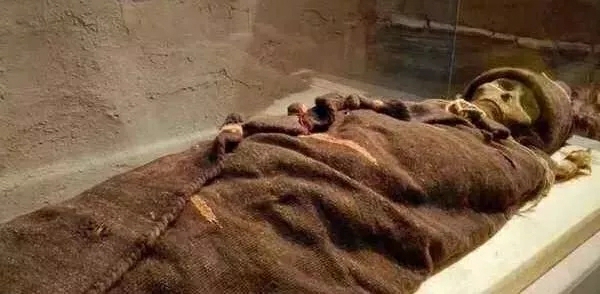
Xinjiang Regional Museum:
Xinjiang Museum Located at No.132 Xibei Road, Urumqi, it was built in 1953. with a total ground area of 41,000 square metres and exhibiting an area of 7800 square meters, the museum is the main institution to collect and investigate the unearthed cultural relics and specimens in Xinjiang. There are more than 50 thousand pieces of various kinds of cultural relics stored in the museum, among them, the ancient mummies represented by " The Loulan Beauty ", manuscripts in Chinese, Kharosthi, Qiuci, Yanji, Tibetan, Uigurian, and other characters prevailed in ancient Western Regions, the silk, wool, cotton and hemp fabrics, and folk raiment, etc., are unusual tidbits in the world. The museum has made extensive contacts with museums domestic and abroad and held several exhibitions abroad. The main exhibitions on display include "The Exhibition of Historic Cultural Relics in Xinjiang", "A Selection of the Unearthed Cultural Relics in Xinjiang", " The Exhibition of Ancient Mummies in Xinjiang", " The Exhibition of the Customs of the nationalities in Xinjiang", etc, and various special exhibitions are often held here.
Heavenly Lake:
Heavenly Lake( Tianchi ) is located at halfway of the mountain below Bogda Peak in Fukang City Xinjiang, 110 kilometers east of Urumqi and 1, 980 meters above sea level as a natural mountain lake. In crescent. the lake is 3, 400 m long and about 1, 500 m at the widest part, covering 4.9 square kilometers with a maximum depth of 105 meters. The water is clear and crystal. Surrounded by rolling mountains, it has carpet-like green grass and wildflowers, known as " pearl of Tianshan Mountain".
Best time to Nothern Xinjiang?
Every April to October is the best time to travel to Northern Xinjiang, Among them, the spring in Xinjiang is quite short, from Mid-March to May. Because of the invasion of the cold weather, usually with the strong gale. The average temperature of this season is between 10 and 22 degrees Celsius. So it is the best time to look at the green foliage around the trees.
From June to August, this time is considered to be the peak tourist season and hottest season in Xinjiang, with an average temperature that is over 22 degrees Celsius, therefore, in this season, you can enjoy the beautiful natural landscape and explore the local customs and practices here. In this time we recommended you to visit Nalaty Grassland and Kanas
September to October is the best time to enjoy the magnificent landscape, the temperature range from 10 to 22 Degree Celsius, thus cool weather has made the tourists come here to enjoy the warm atmosphere of this place. In this time we recommended you to visit Urumqi, Kanas, and Tianchi.
In winter, everything in Northern Xinjiang has turned into a world of ice and snow, a magnificent snowfield, a glittering birch forest haze, a snow-covered ice lake, and you can also experience the wonderful snow bergs such as Tianshan Mountain and Kanas.
Best time to southern Xinjiang:
Every August to October is the best time to travel to Southern Xinjiang because, at the time, the scenery of South Xinjiang is quite charming, the temperature is moderately cool and the melons and fruits are quite fragrant.
From June to October is the best time to travel to Kuqa. Kuqa County is situated in the warm zone, dry climate, less precipitation, hot summer, dry and cold in winter, annual temperature and sunshine are different, so it belongs to the warm zone continental arid climate. Due to the complexity of the landform, there are obvious regional climate differences.
Every June to October is the best time to travel to Kashgar, at this time, the climate is mild, the fragrance of melons and fruits, which is quite suitable for sightseeing and vacation. Karakul Lake is also the most beautiful lake in this season, suitable for hiking.
Every August to Mid-October is the best time to visit Korla. Korla is a temperate continental arid climate, the annual average temperature is about 11 degrees Celsius, in winter temperature is between -10 to -7.9 degrees Celsius, in summer, the average temperature is 26 degrees Celsius. Generally speaking, the climate in southern Xinjiang is relatively moderate.
Autumn is the ripening season of melons and fruits, every August and September, there will be a "Korla Bergamot Pear Festival", which is the best time to visit Korla. while if you would like to enjoy the swans in Swan Lake and the traditional activities of Xinjiang Minorities in Bayinbrook Grassland, you'd better come to Korla in April and July.

